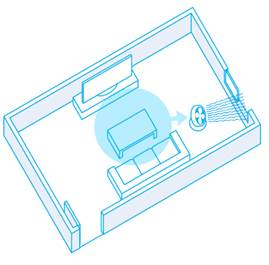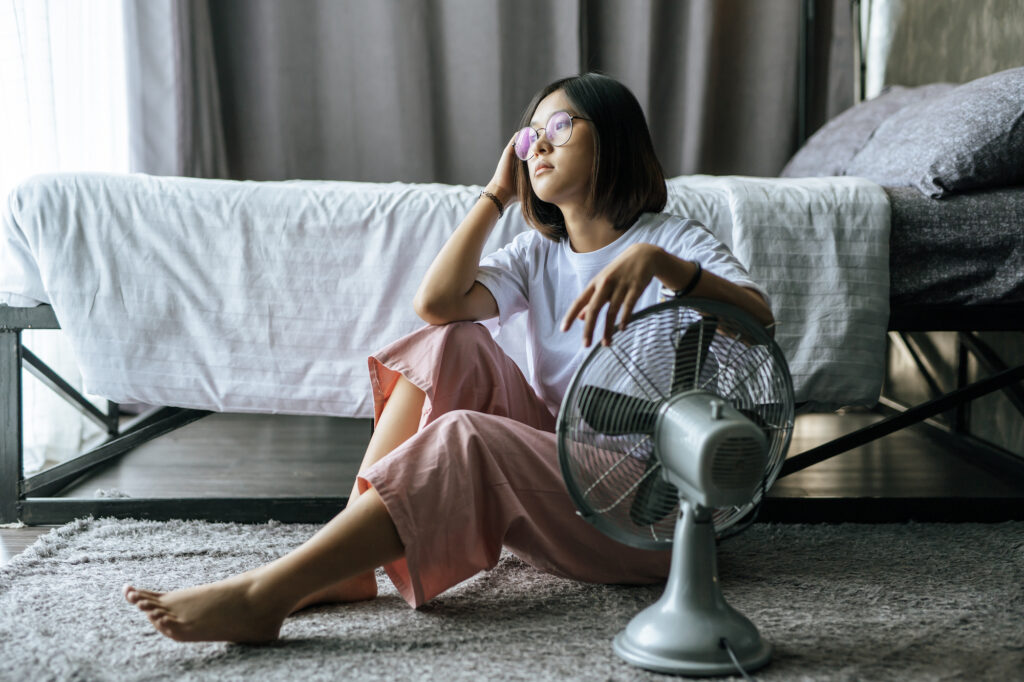Most of us have been spending a lot more time at home over the last couple of months, which means it’s extra important to make sure your home is well ventilated and full of fresh air.
What are pollutants?
Pollutants (substances that are harmful to humans) include carbon dioxide (CO2), carbon monoxide (CO), formaldehyde (HCHO), house dust, pollen, bacteria, and viruses that exist in the air of a room.
Ventilation can be expected to dilute these pollutants and displace them from the room.
Why do I need to ventilate?
Ventilation dilutes and displaces pollutants in the air of a room.
In a completely closed room, air cannot easily leave the room, causing air pollutants to remain and increase in the room. This situation can impact the health of the people in the room.
Ventilation is extremely important for diluting and displacing these air pollutants.
Dirty air accumulates in a room with no ventilation.
Many of the residences where you live such as houses and condominiums have a high level of airtightness, and dirty air cannot easily leave the room. When nothing is done in these types of residences, there will be insufficient ventilation, and dirty air will increasingly accumulate in the room.
Can’t I use the air conditioner to ventilate?
Many people mistakenly believe that air conditioners bring air from outside the home and that this air is used to ventilate the room.
In fact, air conditioners commonly used in New Zealand create a comfortable environment just by drawing air from INSIDE the room, cooling or warming it, then returning that air back to the room.
Indoor air is not replaced by fresh outdoor air.
Most air conditioners do not perform ventilation.
Create an Air Passage
When ventilation is performed by opening windows, it is better to open two windows instead of one in order to create an air passage for efficient ventilation. It is even more efficient if the two windows are diagonal to each other.
Opening two windows positioned closely to each other will prevent air from flowing through the entire room.
Wind and air tend to smoothly enter a room through small gaps while easily leaving a room through larger gaps (with a small force). If you find it difficult for a breeze to flow into a room, try opening the window supplying air only a narrow distance while opening the window discharging air a much wider distance. This will increase ventilation efficiency.
When there is only one window, it is effective to open the room door and place a fan or similar device near the window.
The most effective method is to turn the fan toward the window and let air outside the room. If the fan is directed toward the room, even though fresh outdoor air will enter the room through the window, the dirty air in the room will remain inside.

For a room without a window
When a room has no windows, you can open the room door and place a fan or similar device to enable the flow of air outside the room. The air from other rooms is also effectively discharged outside the house by operating a ventilation fan for a bath, lavatory, or toilet.
Operating a kitchen ventilation fan can be especially effective since it can discharge the largest volume of air among all the ventilation fans installed in the house. Try opening a window located as far away as possible from the kitchen to ventilate the entire room effectively. Even when two windows are available, the kitchen ventilation fan can still assist in ventilation. For this reason, we recommend using the kitchen ventilation fan in addition to opening a door.

